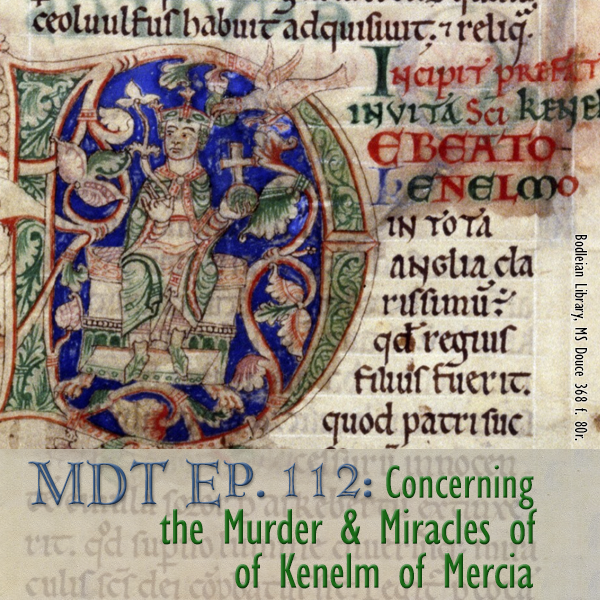- Download:
- MP3 Audio64 MB

This episode, we go into more depth with the legend of St. Kenelm (Cynehelm) and his jealous sister Quendrida (Cwenthryth). We also learn what it means to “crab the parson.”
Today’s Text
- “The Legend of St. Kenelm.” Translated by John Amphlett in A Short History of Clent, Parker and Co., 1890, pp. 177-193. Google Books.
References
- Brand, John. Observations on the Popular Antiquities of Great Britain: Chiefly Illustrating the Origin of Our Vulgar and Provincial Customs, Ceremonies, and Superstitions, edited, revised, and expanded by Henry Ellis, vol 1, Henry G. Bohn, 1859. Google Books.
- Cross, Tom Peete. “Witchcraft in North Carolina.” Studies in Philology, vol. 16, no. 3, Jul. 1919, pp. 217-287. Google Books.
- Rollason, D. W. “The Cults of Murdered Royal Saints in Anglo-Saxon England.” Anglo-Saxon England, vol. 11, 1983, pp. 1-22. JSTOR, www.jstor.org/stable/44510759
- Weiskott, Eric. “Saint Kenelm, Illustrated.” Erikweiskott.com, 21 Nov. 2016, ericweiskott.com/2016/11/21/saint-kenelm-illustrated/
- Whitelock, Dorothy, editor and translator. “From the Report of the Legates to Pope Hadrian (786).” English Historical Documents: ca. 500-1042, vol. 1, Eyre and Spottiswoode, 1955,pp. 770-774. Archive.org.
Image Credit: Detail of Kenelm with a bird at his ear from Bodleian Library, MS Douce 368 f. 80r (12th cent.).
Audio Credit: “6 Morceaux, Op. 85 – 3. Cavatina.” Composed by Joachim Raff, performed by Benjamin Intartaglia. Musopen. Used under CC-BY 3.0 license.



Leave a Reply